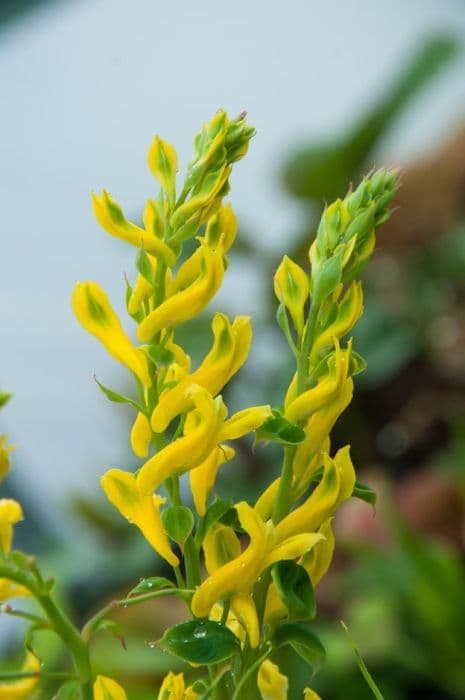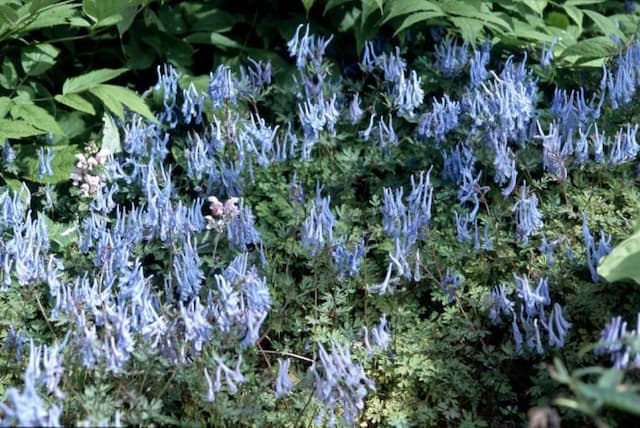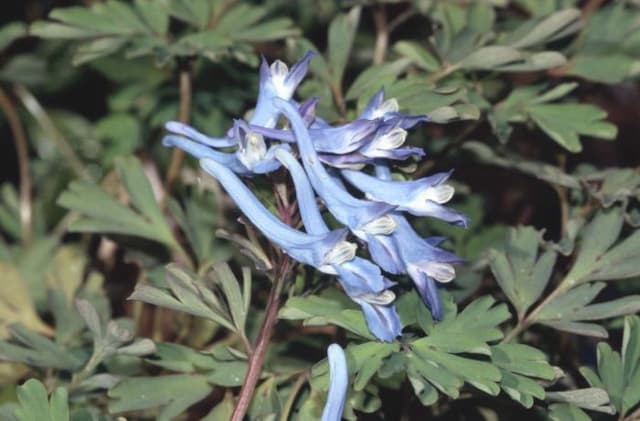California Poppy Eschscholzia californica 'Fire Bush' (Thai Silk Series)

ABOUT
The California Poppy 'Fire Bush' from the Thai Silk Series is a stunning flowering plant that showcases vibrant, fiery hues. The petals display a mix of orange, red, and yellow tones, reminiscent of a blazing sunset. The semi-double to double flowers exhibit a delicate, silky texture, which contributes to the luminous quality of their coloring and gives the series its name, Thai Silk. The blossoms of 'Fire Bush' are cup-shaped and can appear to glow when bathed in sunlight, creating a warm and inviting display in any garden setting. The foliage is a bluish-green, finely divided, and feathery, which forms an attractive backdrop for the vivid flowers. This plant offers a striking contrast of bright blooms and soft leaves.
About this plant
 Names
NamesFamily
Papaveraceae
Synonyms
California Poppy, Golden Poppy, California Sunlight, Cup of Gold
Common names
Eschscholzia californica.
 Toxicity
ToxicityTo humans
The California poppy, generally considered to have low toxicity for humans, is not known to cause serious harm if ingested. However, all plants can potentially cause a reaction due to individual allergies or sensitivities. If large amounts were eaten, it might cause mild discomfort such as nausea or gastrointestinal upset. As with any non-food plant, it is advisable not to consume parts of the California poppy.
To pets
The toxicity of the California poppy to pets is generally low. While it is not considered to be highly poisonous to animals, ingestion could potentially lead to mild gastrointestinal upset, including symptoms like vomiting or diarrhea. To be safe, it is recommended to prevent pets from consuming this plant. If your pet shows any signs of illness after ingestion, consult a veterinarian.
 Characteristics
CharacteristicsLife cycle
Perennials
Foliage type
Deciduous
Color of leaves
Blue-green
Flower color
Varies
Height
1 foot (30 cm)
Spread
1 foot (30 cm)
Plant type
Herb
Hardiness zones
8
Native area
California
Benefits
 General Benefits
General Benefits- Drought tolerance: California poppy 'Fire Bush' is well-adapted to dry conditions, reducing the need for frequent watering.
- Low maintenance: This plant requires minimal care once established, making it ideal for gardeners seeking a low-effort landscape.
- Attracts pollinators: The vibrant flowers attract bees, butterflies, and other beneficial insects, promoting biodiversity.
- Heat resistance: California poppy 'Fire Bush' can tolerate high temperatures, making it suitable for hot climates.
- Colorful displays: The plant produces fiery-hued blooms that can enhance the aesthetics of any garden space.
- Easy to grow: It's easy to cultivate from seed and can thrive in a variety of soil types, making it accessible for novice gardeners.
- Self-seeding: California poppy 'Fire Bush' often self-seeds, potentially providing new plants year after year with little effort.
 Medical Properties
Medical Properties- Analgesic: California poppy has been traditionally used for its mild pain-relieving properties.
- Sedative: It is sometimes used for its sedative and anxiety-reducing effects.
- Anxiolytic: The plant may have a role in reducing anxiety and stress.
- Antispasmodic: California poppy contains alkaloids that can help relax muscle tension and spasms.
- Sleep Aid: It is occasionally used to promote restful sleep due to its mild sedative effects.
 Air-purifying Qualities
Air-purifying QualitiesThis plant is not specifically known for air purifying qualities.
 Other Uses
Other Uses- California poppy can be used in xeriscaping, a landscaping method that requires minimal irrigation, due to its drought-tolerant characteristics.
- The plant can function as a natural dye for fabrics, with the flowers providing orange and yellow hues.
- California poppy petals can be incorporated into salads or used as a colorful garnish for culinary dishes due to their vibrant color.
- The seeds of the California poppy are used in gardening to attract pollinators such as bees and butterflies to the ecosystem.
- California poppy plants can be used in creating natural borders or edging in gardens because of their low-growing and spreading habit.
- As part of ornamental horticulture, California poppies are often planted in containers or hanging baskets for decorative outdoor displays.
- The dried pods of California poppies can be used in floral arrangements or crafts for their unique appearance.
- Planting California poppy can be used as part of companion planting strategies to deter pests naturally in vegetable gardens.
- California poppy forms an effective ground cover to prevent soil erosion on slopes and banks due to its sturdy root system.
- The flowers can be used in pressed flower crafts, such as bookmarks or decorative cards, preserving their beauty in a different form.
Interesting Facts
 Feng Shui
Feng ShuiThe California Poppy is not used in Feng Shui practice.
 Zodiac Sign Compitability
Zodiac Sign CompitabilityThe California Poppy is not used in astrology practice.
 Plant Symbolism
Plant Symbolism- Peace and Sleep: The California Poppy, which Eschscholzia californica 'Fire Bush' is a part of, has long been associated with sleep due to its sedative properties when used as an herbal remedy.
- Resilience and Survival: As a wildflower that thrives in tough conditions, it symbolizes the ability to withstand adversity and keep flourishing.
- Beauty and Attraction: With its fiery orange hues, this plant is commonly related to aesthetic beauty and the attraction we have to visually pleasing elements in nature.
 Water
WaterThe California poppy, including the 'Fire Bush' variant, should be watered deeply but infrequently to mimic its natural drought-tolerant environment. The optimal watering schedule is roughly once a week, allowing the soil to dry out between waterings. When you do water, aim to apply approximately 1 gallon of water per square foot of soil, ensuring even moisture penetration without waterlogging the plant. Adjustments to this schedule may be necessary during extremely hot or dry periods when additional water might be needed.
 Light
LightThe California poppy thrives in full sun conditions where it can receive at least 6 to 8 hours of direct sunlight each day. For optimal growth and flowering, plant it in a location where it is exposed to unfiltered sunlight throughout the day. Avoid planting in shaded or partially shaded areas, as too little light can hinder the plant's bloom production and overall vigor.
 Temperature
TemperatureCalifornia poppies, including the 'Fire Bush' variety, are best suited for temperatures between 50°F and 75°F, with ideal growth occurring within this range. While they can tolerate higher temperatures up to around 85°F, they may experience stress if the temperature consistently exceeds this. These plants are also adapted to colder conditions and can withstand temperatures as low as 10°F, but prolonged exposure to cold can be detrimental.
 Pruning
PruningPruning California poppies like 'Fire Bush' mainly involves deadheading, which is the removal of spent flowers. This encourages more blooms and prevents the plant from setting seed too early in the growing season. Deadhead regularly throughout the bloom period. Cut back the foliage to the base after blooming ceases in late summer or autumn to tidy up the plant and promote vigorous growth for the next season.
 Cleaning
CleaningAs needed
 Soil
SoilCalifornia Poppy 'Fire Bush' thrives in well-draining soil with low fertility; a mix of loamy soil, sand, and perlite is ideal, aiming for a pH between 6.0 and 7.5.
 Repotting
RepottingCalifornia Poppies, including the 'Fire Bush', are generally not repotted as they prefer not to be disturbed and are typically grown as annuals due to their short lifespan.
 Humidity & Misting
Humidity & MistingCalifornia Poppy 'Fire Bush' does well in dry conditions and does not require high humidity; average atmospheric humidity is sufficient for its growth.
 Suitable locations
Suitable locationsIndoor
Provide full sun, well-draining soil, and minimal water.
Outdoor
Full sun, well-draining soil, water sparingly, protect from wind.
Hardiness zone
6-10 USDA
 Life cycle
Life cycleCalifornia Poppy 'Fire Bush' begins its life cycle as a seed that germinates in well-drained soil and full sunlight. Upon germination, a rosette of fern-like leaves emerges, followed by the development of a flowering stem. The plant then produces distinctive cup-shaped blooms that are orange, red, or mixed, characteristic of the 'Thai Silk Series'. After pollination, which is typically done by insects, the plant sets seed in elongated seed pods. The seeds disperse naturally, falling close to the parent plant or carried further by wind or animals. California Poppy 'Fire Bush' may exhibit annual or perennial tendencies depending on climate conditions, with plants in milder climates potentially overwintering and blooming in subsequent years.
 Propogation
PropogationPropogation time
Spring
Propogation: California Poppy 'Fire Bush' (Thai Silk Series) is typically propagated by seed. The most popular method of propagation for this plant is direct sowing into well-drained soil after the danger of frost has passed in the spring. To achieve optimal germination, scatter the seeds thinly onto prepared soil and cover them lightly with about 1/16 inch (approximately 1.5 millimeters) of soil. They require a sunny position and should not be overwatered once established. Keeping in mind their sensitivity to transplanting, it's often recommended to sow them in place where they are to grow rather than starting them indoors for later transplantation. Seedlings usually appear within two to three weeks under optimal conditions provided temperatures are between 55°F and 65°F (13°C to 18°C).









